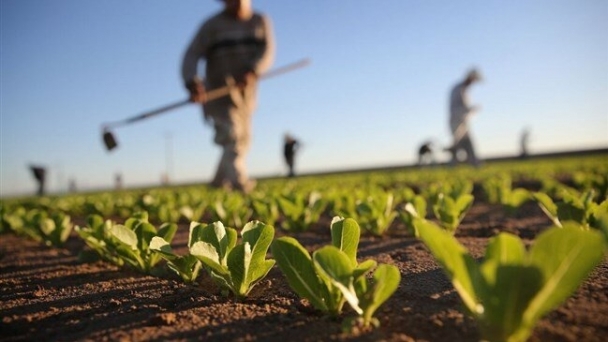December 4, 2024 | 17:04 GMT +7
December 4, 2024 | 17:04 GMT +7
Hotline: 0913.378.918
December 4, 2024 | 17:04 GMT +7
Hotline: 0913.378.918

Law No. 71/2014/QH13 on the amendments to the Law on Tax, dated November 26, 2014, approved by the National Assembly, stipulates that fertilizers, specialized machinery and equipment for agroproduction belong to the group of objects not subject to VAT. Photo: Kim Anh.
The Law on Value Added Tax 2008 stipulates that fertilizers are subject to value-added tax (VAT) at the rate of 5%. In order for farmers to have access to fertilizers at a reasonable price, on November 26, 2014, Law No. 71/2014/QH13 on the amendments to the Law on Tax (Tax Law 71) was approved by the National Assembly.
The Tax Law 71 stipulates that fertilizers, specialized machinery and equipment for agroproduction are not subject to VAT since the beginning of 2015. However, after nearly 8 years of implementation, the VAT exemption for fertilizers is causing many shortcomings, having a great impact on businesses and farmers.
Vu Minh Tuan, Deputy Director of Southern Fertilizer Joint Stock Company (SFJC), said that many input materials for domestic fertilizer production are subject to VAT with a total of up to over VND 270 billion, equivalent to nearly VND 34 billion/year, but not deducted. Meanwhile, imported fertilizers are not subject to VAT, which leads to unfair competition between domestic and foreign fertilizers.
In fact, before 2015, the Southern Fertilizer Joint Stock Company produced 355,000 - 400,000 tons of fertilizer/year. However, in 2022, the company’s fertilizer output was reduced by more than 54%. The investment and development fund of the enterprise was gradually "drained" as the profit was pulled down and SFJC was unable to reinvest, so the production line system could no longer operate to its full capacity.

The fertilizer output decreased greatly, so enterprises are pressured to increase product prices and farmers were directly affected. Photo: Kim Anh.
Facing a similar situation, at Can Tho Fertilizer and Chemical Joint Stock Company (CFC), Deputy General Director Nguyen Nam Binh pointed out that up to 50% of fertilizer output is exported. Enterprises will be able to deduct tax according to the export rate, however, some raw materials are not subject to tax, so they cannot be refunded. Compared to before the introduction of Tax Law 71, enterprises used to lose 60 - 70% of export tax refunds every year.
This in turn creates favorable conditions for imported products to compete with domestically produced fertilizer products. Businesses that want to maintain production have no choice but to transfer tax costs into product prices. But that’s not all. In order to reach consumers’ hands, fertilizer has to go through many stages: the businesses produce, traders come to purchase and transport, agencies distribute, and so on. Fertilizer prices will be multiplied, and the people will be directly affected.
If it was 2 - 3 years ago, CFC would still invest to expand production, maybe adding a factory or workshop. But since Tax Law 71 was introduced, this business has not made any investment for the past 8 years, only using its resources to regularly repair the machinery system to restore functionality.

Fertilizer enterprises in the Mekong Delta want fertilizers to be subject to VAT, lessening the burden on farmers. Photo: Kim Anh.
Hoping to see farmers buying fertilizer at a more reasonable price, Deputy General Director Nguyen Nam Binh deemed it essential to have more integrated policies. "It is advisable to consider switching fertilizer products from “non-VAT taxable” to “taxable” to reduce the selling price and ultimately the burden on farmers and businesses during this difficult time."
Southern Fertilizer Joint Stock Company also comes up with many solutions, including lowering product prices to compete with imported fertilizers. However, in principle of business, this enterprise can not reduce prices to the capital level, which will lead to losses. The leadership of SFJC hopes that the Government would submit a request to the National Assembly for reconsideration and amendment of Tax Law 71 to be suitable for the domestic fertilizer industry, limiting dependence on imported fertilizers in the long run.
The Ministry of Finance has submitted to the Government a draft Decree promulgating the Export Tariff, Preferential Import Tariff, List of goods and absolute tax rates, mixed tax, and import tax outside the tariff quota.
Accordingly, the draft Decree mentions specific tax rates for each type of fertilizer. As a rule, the domestic fertilizer industry needs imported fertilizer, considering that production has not yet met demand. Regarding over-produced fertilizers, there is a tax rate to encourage exports.
Translated by Samuel Pham

(VAN) To contribute to the sustainable development of aquaculture, scientists have conducted experiments to determine the waste load from lobster farming activities.

(VAN) The South Central region has recently encountered a number of challenges and difficulties in the lobster mariculture industry, demanding immediate attention in order to advance towards sustainable development.

(VAN) China has announced an action plan to reduce food loss and waste, aiming to establish a more sound long-term mechanism by the end of 2027.

(VAN)An official in the Iranian Agriculture Ministry has said that the target to expand overseas farming has been mentioned in a five-year vision plan that will end in the calendar year 1407 (ending March 2029).

(VAN) At first, the suggestion to try farming maggots spooked Mari Choumumba and other farmers in Nyangambe, a region in southeastern Zimbabwe where drought wiped out the staple crop of corn.

(VAN) The State of Agricultural Commodity Markets 2024 looks at global trade flows of nutrients and possible obesity drivers.

(VAN) Experts agreed that with the same construction costs, the multi-purposed water works should be prioritized at the forum ‘Strengthening Communication on Proper and Effective Water Use to Ensure Water Security in the Mekong Delta’.